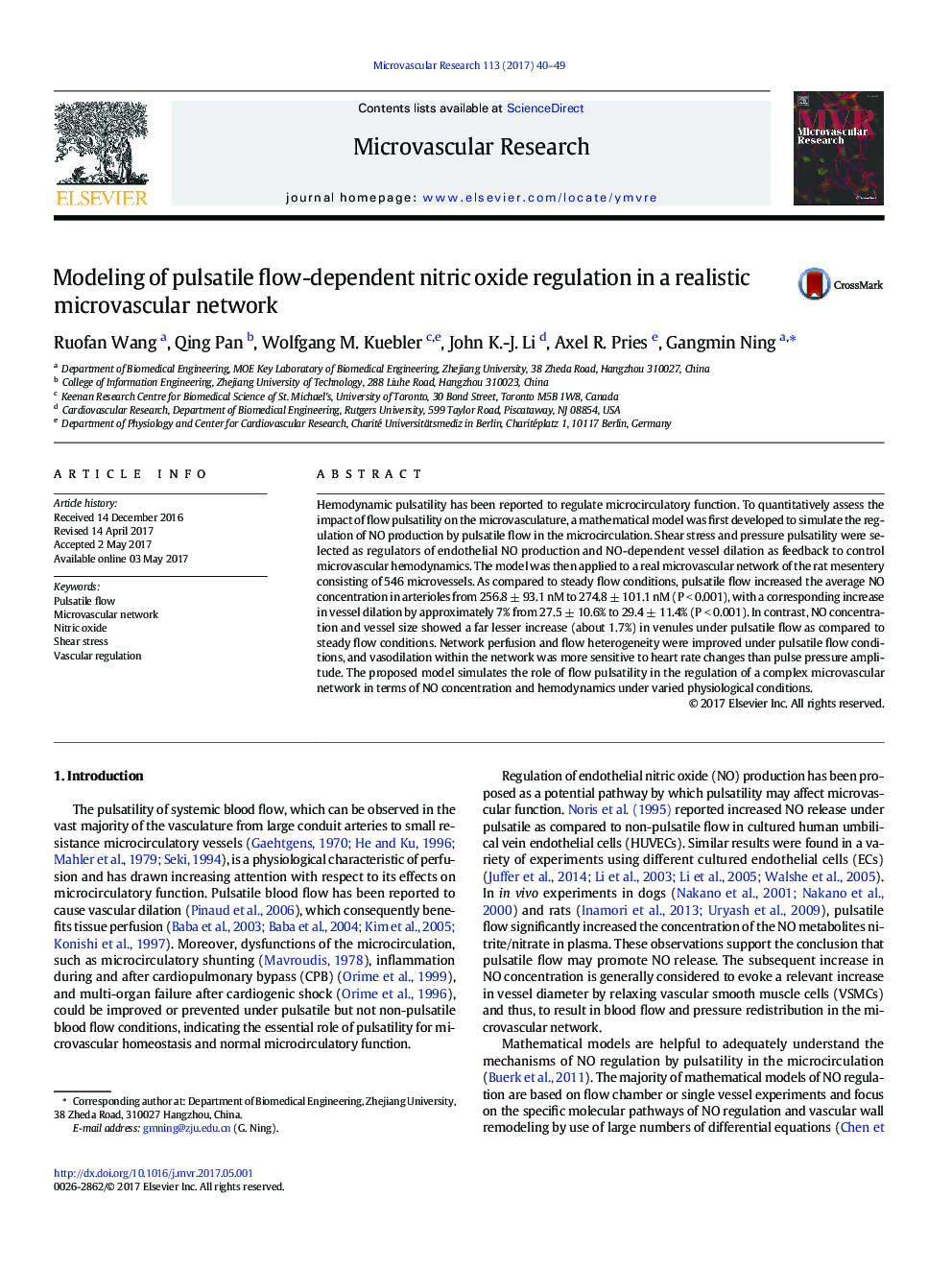| Article ID | Journal | Published Year | Pages | File Type |
|---|---|---|---|---|
| 5513751 | Microvascular Research | 2017 | 10 Pages |
Abstract
Hemodynamic pulsatility has been reported to regulate microcirculatory function. To quantitatively assess the impact of flow pulsatility on the microvasculature, a mathematical model was first developed to simulate the regulation of NO production by pulsatile flow in the microcirculation. Shear stress and pressure pulsatility were selected as regulators of endothelial NO production and NO-dependent vessel dilation as feedback to control microvascular hemodynamics. The model was then applied to a real microvascular network of the rat mesentery consisting of 546 microvessels. As compared to steady flow conditions, pulsatile flow increased the average NO concentration in arterioles from 256.8 ± 93.1 nM to 274.8 ± 101.1 nM (P < 0.001), with a corresponding increase in vessel dilation by approximately 7% from 27.5 ± 10.6% to 29.4 ± 11.4% (P < 0.001). In contrast, NO concentration and vessel size showed a far lesser increase (about 1.7%) in venules under pulsatile flow as compared to steady flow conditions. Network perfusion and flow heterogeneity were improved under pulsatile flow conditions, and vasodilation within the network was more sensitive to heart rate changes than pulse pressure amplitude. The proposed model simulates the role of flow pulsatility in the regulation of a complex microvascular network in terms of NO concentration and hemodynamics under varied physiological conditions.
Related Topics
Life Sciences
Biochemistry, Genetics and Molecular Biology
Biochemistry
Authors
Ruofan Wang, Qing Pan, Wolfgang M. Kuebler, John K.-J. Li, Axel R. Pries, Gangmin Ning,
